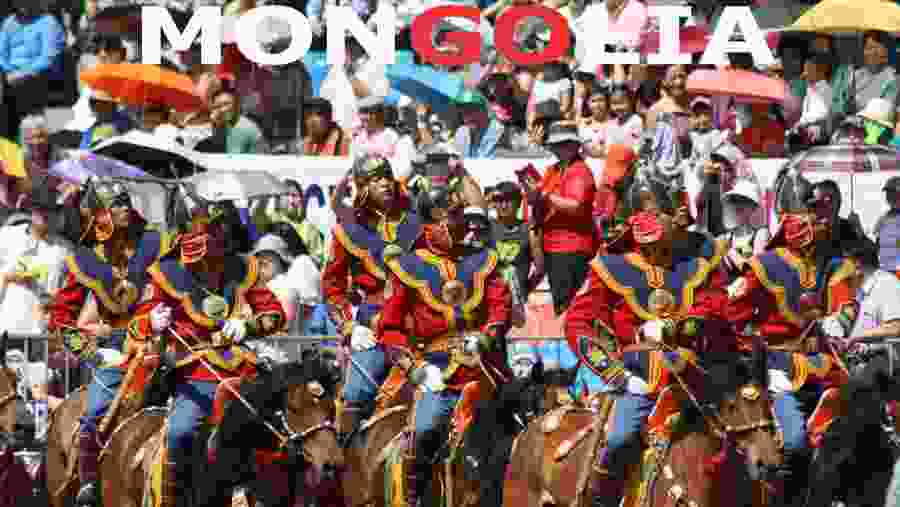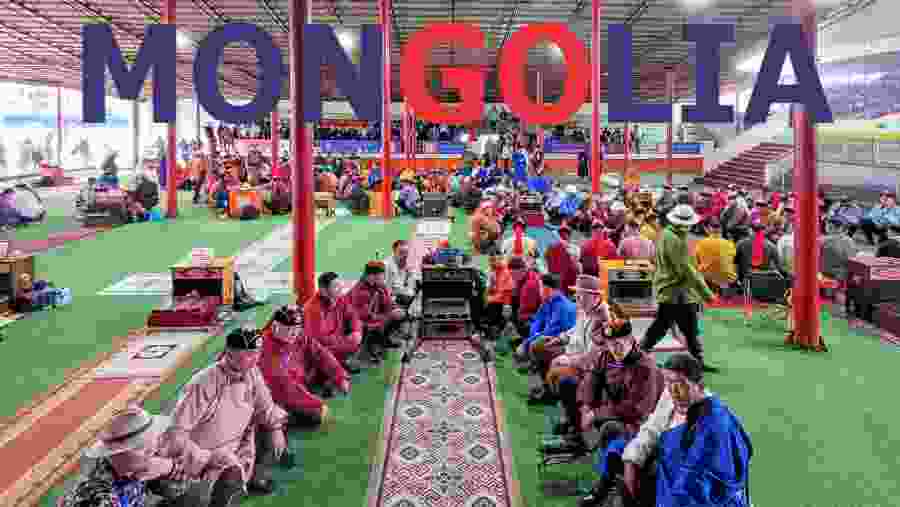LAST GUARANTEED PLACES FOR THE GREAT NAADAM FESTIVAL OF MONGOLIA ? (JULY 1-JULY 15) 2025 (NO FLIGHTS ✈) ✈ ORIGIN/END: ULAANBAATAR, MONGOLIA
Highlights
bird, nature, rural, cultural, photography, adventure sports, historical, Desert, Eco Tourism, Wildlife
Tour Type
bird, nature, rural, cultural, photography, adventure sports, historical, Desert, Eco Tourism, Wildlife
Group Tour
15 Days
Medium
English, Spanish
Description
FINAL GUARANTEED SUMMARY TOUR WITH SPANISH/ENGLISH LOCAL GUIDE.
Breakfast (B), Lunch (L), Dinner (D)
01-07-25, Day 1: Arrival in Ulaanbaatar. Meet and greet with the Samar Magic Tours team and transfer to your hotel (*rooms may be used after 2:00 PM on the day of arrival). Tour in Ulaanbaatar. Welcome lunch. PREMIUM Hotel4*. (L).
02-07-25, Day 2: Ulaanbaatar-Baga Gazariin Chuluu Rock Formations in the Central Gobi. Gers Tourist Camp. (B+L+D).
03-07-25, Day 3: Tsagaan Suvarga White Stupa in the Central Gobi. Gers Tourist Camp. (B+L+D).
04-07-25, Day 4: Yoliin Am Valley or Bone Vulture Valley in the Gobi Desert. Gers Tourist Camp. (B+L+D).
05-07-25, Day 5: Giant Singing Sand Dunes of Khongor - Nomadic Family with Bactrian Camel Farms - Camel Ride through the Dunes. Gers Tourist Camp. (B+L+D).
06-07-25, Day 6: Bayanzag Fire Cliffs in the Gobi Desert. Gers Tourist Camp. (B+L+D).
07-07-25, Day 7: Ongii Temple Ruins in the Central Gobi. Gers Tourist Camp. (B+L+D)
08-07-25, Day 8: Karakoram - Ancient capital of Genghis Khan's Mongol Empire. Gers Tourist Camp.(B+L+D).
09-07-25, Day 9: Karakoram - Orkhon Valley - Turkish Memorials - Lake Ugii - Karakoram. Gers Tourist Camp. (B+L+D).
10-09-25, Day 10: Karakoram - Hustain Nuruu National Park - Ulaanbaatar. PREMIUM Hotel4*. (B+L).
11-07-25, Day 11: Opening of the Grand Naadam Festival. Competitions begin. PREMIUM Hotel4*. (B+L).
12-07-25, Day 12: Ulaanbaatar - Horse Racing - Ulaanbaatar. Competitions continue. Closing of the Grand Naadam Festival. PREMIUM Hotel4*. (B+L).
13-07-25, Day 13: Ulaanbaatar - Great Equestrian Statue of Genghis Khan - Ulaanbaatar. PREMIUM Hotel4*. (B+L).
14-07-25, Day 14: Ulaanbaatar Tour. Final Shopping. PREMIUM Hotel4*. (B+L).
15-07-25, Day 15: Rooms must be vacated by 12 noon. Transfer. End of trip. (B).
Itinerary
-
LAST GUARANTEED PLACES FOR THE GREAT NAADAM FESTIVAL OF MONGOLIA ? (JULY 1-JULY 15) 2025 (NO FLIGHTS ✈️)
GUARANTEED SUMMARY TOUR WITH SPANISH/ENGLISH LOCAL GUIDE.
01-07-25, Day 1: Arrival in Ulaanbaatar. Meet and greet with the Company team and transfer to your hotel (*rooms may be used after 2:00 PM on the day of arrival). Tour in Ulaanbaatar. Welcome lunch. PREMIUM Hotel4*. (L).
02-07-25, Day 2: Ulaanbaatar-Baga Gazariin Chuluu Rock Formations in the Central Gobi. Gers Tourist Camp. (B+L+D).
03-07-25, Day 3: Tsagaan Suvarga White Stupa in the Central Gobi. Gers Tourist Camp. (B+L+D).
04-07-25, Day 4: Yoliin Am Valley or Bone Vulture Valley in the Gobi Desert. Gers Tourist Camp. (B+L+D).
05-07-25, Day 5: Giant Singing Sand Dunes of Khongor - Nomadic Family with Bactrian Camel Farms - Camel Ride through the Dunes. Gers Tourist Camp. (B+L+D).
06-07-25, Day 6: Bayanzag Fire Cliffs in the Gobi Desert. Gers Tourist Camp. (B+L+D).
07-07-25, Day 7: Ongii Temple Ruins in the Central Gobi. Gers Tourist Camp. (B+L+D)
08-07-25, Day 8: Karakoram - Ancient capital of Genghis Khan's Mongol Empire. Gers Tourist Camp.(B+L+D).
09-07-25, Day 9: Karakoram - Orkhon Valley - Turkish Memorials - Lake Ugii - Karakoram. Gers Tourist Camp. (B+L+D).
10-09-25, Day 10: Karakoram - Hustain Nuruu National Park - Ulaanbaatar. PREMIUM Hotel4*. (B+L).
11-07-25, Day 11: Opening of the Grand Naadam Festival. Competitions begin. PREMIUM Hotel4*. (B+L).
12-07-25, Day 12: Ulaanbaatar - Horse Racing - Ulaanbaatar. Competitions continue. Closing of the Grand Naadam Festival. PREMIUM Hotel4*. (B+L).
13-07-25, Day 13: Ulaanbaatar - Great Equestrian Statue of Genghis Khan - Ulaanbaatar. PREMIUM Hotel4*. (B+L).
14-07-25, Day 14: Ulaanbaatar Tour. Final Shopping. PREMIUM Hotel4*. (B+L).
15-07-25, Day 15: Rooms must be vacated by 12 noon. Transfer. End of trip. (B).
What's Included
What's Excluded
Know Before You Go
What To Bring
Meeting Point
Cancellation Policy
-
No refund in case of any cancellation.
Price
| Adult | |
|---|---|
| 1 to 16 | /person |
| Child | |
|
This is a group tour |
|





